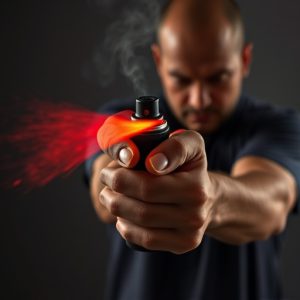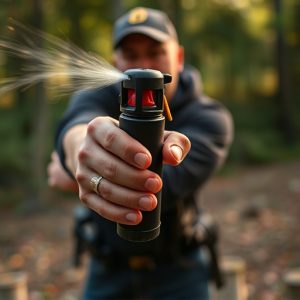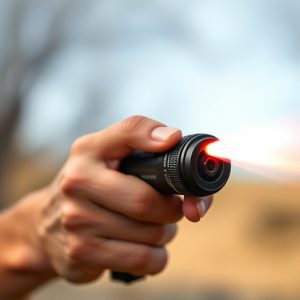Pepper Spray Performance in Wet Conditions: Safety Strategies for Rainy Scenarios
The "Pepper Spray Effectiveness in Rain" section examines how moisture affects this self-d…….
The "Pepper Spray Effectiveness in Rain" section examines how moisture affects this self-defense tool's range and intensity, potentially reducing its effectiveness due to chemical dilution. However, specialized formulations maintain potency in wet conditions. To maximize its reliability, users should employ direct streaming at close range, time their use during downpours, and choose water-resistant or waterproof cans. Practicing deployment in simulated rainy settings enhances safety and efficacy.
“Discover the surprising effectiveness of pepper spray in wet conditions with our comprehensive guide. In scenarios where rain can impair visibility and reduce spray performance, understanding how pepper spray interacts with water is key to self-defense. We explore the mechanics behind its potency in rainy weather, offering insights into safety considerations and strategic use techniques. Learn how to navigate the challenges of pepper spray effectiveness in the rain and empower yourself with knowledge for real-world applications.”
- Pepper Spray Performance Under Wet Conditions: What You Need to Know
- Understanding the Mechanics of Pepper Spray in Rain
- Safety Considerations and Effective Use Strategies in Rainy Scenarios
Pepper Spray Performance Under Wet Conditions: What You Need to Know
Pepper spray, a popular non-lethal self-defense tool, has long been relied upon for its effectiveness against potential threats. However, when faced with wet conditions, such as heavy rain or mist, questions arise about its performance. The effectiveness of pepper spray in rainy weather is a concern for many users, especially those living in regions with high humidity or frequent rainfall.
In terms of Pepper Spray Effectiveness in Rain, studies have shown that water can significantly impact the spray’s range and intensity. When exposed to moisture, the chemicals within pepper spray may dilute, causing the spray pattern to change. This can result in reduced visibility and a shorter reach, affecting the user’s ability to defend themselves effectively. However, it’s not all negative; some specialized pepper spray formulations are designed to withstand wet conditions, ensuring they maintain their potency even in rain or high humidity, providing users with the necessary protection when needed most.
Understanding the Mechanics of Pepper Spray in Rain
When considering pepper spray as a non-lethal inflammatory self-defense tool, understanding its effectiveness in various weather conditions is essential. One factor that often arises is how pepper spray performs in rainy environments. It’s important to note that while rain may impact the deployment and range of pepper spray, it doesn’t necessarily diminish its overall effectiveness.
The mechanics behind pepper spray involve the release of capsaicin, the active ingredient responsible for the burning sensation it induces. In dry conditions, pepper spray can reach targets effectively, creating a temporary incapacitation by irritating the eyes, nose, and respiratory system. However, rain introduces moisture that can alter its dispersion pattern. Pepper spray droplets, when hit by water, may break down faster, reducing their concentration at the target point. Nonetheless, the irritant properties still have a chance to take effect, especially in close-range encounters where the spray is less diluted.
Safety Considerations and Effective Use Strategies in Rainy Scenarios
When considering a non-lethal inflammatory self-defense tool, such as pepper spray, weather conditions like rain can significantly impact its effectiveness. While pepper spray is designed to impair an attacker’s vision and breathing, rain can dilute its chemical composition, reducing its potency. However, with proper usage strategies, individuals can enhance its reliability in rainy scenarios.
To maximize pepper spray effectiveness in the rain, users should ensure a direct stream towards the assailant’s face, as the liquid formula may evaporate more quickly in damp air. Timing is crucial; aiming at close range during a downpour might provide better results than trying to spray from a distance. Additionally, choosing water-resistant or waterproof pepper spray cans can offer improved performance in wet conditions. Remember, practice in simulated rainy settings beforehand can help individuals become proficient in deploying this tool safely and effectively.
While pepper spray’s effectiveness in dry conditions is well-documented, its performance under wet conditions, particularly during rain, presents unique challenges. Understanding how rain affects the spray’s range and potency is crucial for safe and effective self-defense. By grasping the mechanics of pepper spray in wet environments and implementing appropriate safety considerations and use strategies, individuals can enhance their protection in rainy scenarios. Remember, proper training and a deep understanding of local laws regarding pepper spray usage are essential before considering it as a self-defense tool.


